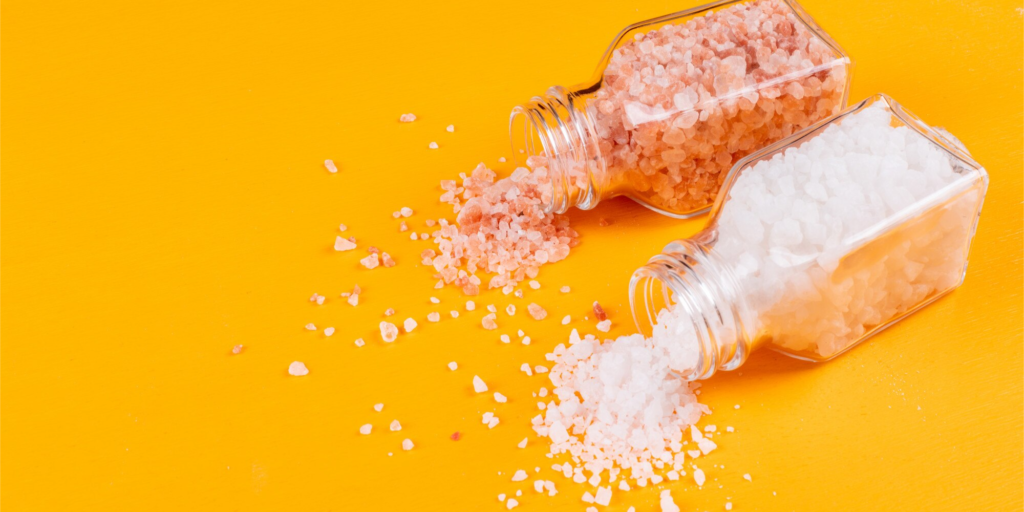In today’s age of social media-driven health trends and pseudoscience, we often find ourselves trying to “fix” things that aren’t broken.
Recently, Himalayan pink salt has earned quite a reputation.
It’s pretty. It’s pink. It’s marketed as “pure,” “mineral-rich,” and “better” than boring old table salt.
But is it actually better for your health?
Let’s take a deep dive!
Why is Himalayan Pink Salt Pink?
Himalayan pink salt is a type of rock salt mined from the ‘Salt Range’ in northeastern Pakistan, in the foothills of the Himalayas. Its distinctive pink hue comes from iron oxide, and it also contains trace amounts of essential minerals like potassium, magnesium, and calcium. Additionally, it has slightly less sodium than table salt, though this difference is compensated by its slightly higher potassium content. Because of these characteristics, Himalayan pink salt is often marketed as a healthier alternative to regular table salt.
Is it Really Healthier than Table Salt?
Scientific research suggests otherwise. For example, a randomized controlled trial studied 14 women aged 40-65 years with hypertension. Participants first consumed table salt for four weeks, followed by a two-week washout period, and then consumed Himalayan pink salt for another four weeks. The study found no significant differences in blood pressure, urinary sodium, or potassium levels before and after exposure to the two diets. This shows that Himalayan pink salt fares no better than table salt.
In contrast, another study found that replacing regular table salt with light salt, which contains 260 mg less sodium per gram of salt, led to a significant reduction in blood pressure. Additionally, reducing total daily salt intake from 11 grams to the recommended 5-6 grams has been shown to lower blood pressure effectively. However, it is important to note that these findings are linked to reducing overall sodium intake. Simply switching to Himalayan pink salt without reducing total consumption does not confer the same health benefits.
The Hidden Risk: Iodine Deficiency
While Himalayan pink salt may not offer extra health benefits, it could pose potential risks, particularly concerning iodine intake. Iodine is crucial for thyroid function and brain development, especially during pregnancy. Iodine deficiency can lead to severe developmental disorders, including goiter, cretinism, hypothyroidism, and learning disabilities.
In India, iodine deficiency is a pressing concern, as local soils, and consequently, the plants and animals that rely on them, lack sufficient iodine. To combat this, the World Health Organization (WHO) and UNICEF support Universal Salt Iodization (USI), a program that fortifies table salt with iodine. Thanks to USI, a National Iodine and Salt Intake (NISI) survey from 2014-2015 reported that over 90% of Indian households use iodized salt, with approximately 78% consuming adequate iodine levels. However, the remaining 10-20% which represents millions of people, still do not consume iodized salt, putting them at risk of iodine deficiency disorders. The growing popularity of Himalayan pink salt could exacerbate this issue.
The best Approach?
People have long used alternative salts, such as rock salt and black salt, to enhance food flavor and texture. While occasional use is harmless, completely replacing iodized salt with these alternatives can have unintended and irreversible health consequences.
Use Himalayan pink salt and other salt alternatives in moderation, and not as a complete substitute for iodized salt.
And when it comes to wellness claims?
You guessed it…
Take them with a pinch of salt.







